It’s one of the noblest and most famous buildings in Britain. But the Royal Albert Hall has witnessed many controversial and scandalous moments in its century-and-a-half of existence. Tony Barrell reports
ROYAL ALBERT HALL, 2022
The Royal Albert Hall has loomed over South Kensington since 1871 – a much-loved London landmark, and a prestigious entertainment venue that has hosted tens of thousands of events over the years. Along with the music, comedy, sport and pageantry, there have been political, religious and social gatherings of many kinds here. And, as you might expect in a high-profile public building, there have been plenty of protests, outcries, and instances of outrageous behaviour as well.
Shortly after the launch of the Votes for Women campaign in the early 1900s, the Hall became a magnet for suffragettes, who found they could earn valuable publicity by disrupting political meetings here. Their main adversary was the Liberal government of the day, which was generally opposed to women’s suffrage. David Lloyd George, then chancellor of the exchequer, faced a notorious ordeal when he came to speak at a meeting of the Women’s Liberal Association here in December 1908. There were so many heckles from suffragettes in the auditorium – many of them repeating their slogan “Deeds, not words!” – that it took him more than two hours to deliver a speech that should have lasted about 20 minutes. There were scuffles as stewards removed hecklers from the building, but some women had chained themselves to their seats, and one protester, Helen Ogston, tried to resist ejection by brandishing a dog whip.
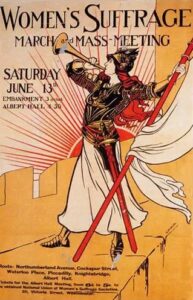
The mood in the building had turned ugly, but the Hall’s organist that day, Horace Holmes, managed to relieve some of the tension. When he began playing the well-known song ‘Oh Dear, What Can the Matter Be?’ there were roars of laughter from the audience. One witness recalled that Holmes’ choice of music “was so apt and so ridiculous that mirth swept the meeting like a gust”, and Lloyd George was able to conclude his speech in relative peace.
The Albert Hall was so important for the suffragettes that they called it their Temple of Liberty
The suffragettes of the Women’s Social and Political Union (WSPU) were soon holding their own meetings at the Hall, one of which was scheduled on the eve of a speech here by the prime minister Herbert Asquith. Following their event, several women rushed to conceal themselves in the building overnight, so they could make a surprise appearance among the Liberals the following day. One agitator was flushed out by Hall staff when she was found quietly hiding among the pipes of the famous organ, equipped with a cushion for her head and a megaphone to amplify her protests.
The Albert Hall was so important for the suffragettes that they called it their “Temple of Liberty”. The building was a destination and rallying point when they organised protest marches, which saw processions of tens of thousands of women carrying banners through the streets of London. In October 1912 the leading campaigner Emmeline Pankhurst made a controversial speech from the stage in which she advocated vandalism as a means of furthering their cause. “Those of you who can break windows, break them,” she instructed her fellow activists. “Those of you who can still further attack the sacred idol of property, so as to make the government realise that property is as greatly endangered by women’s suffrage as it was by the Chartists of old – do so.”
WSPU members had already set fire to the mail in public pillar boxes across the country and smashed shop windows in the West End of London. In April 1913, the trustees of the Royal Albert Hall reacted to their continuing campaign of destruction by banning official meetings by suffragettes.
Also controversial at the time – and more so today, when votes for women are considered a hallmark of a civilised democracy – were the rallies held at the Hall to denounce the idea of women’s suffrage. The speakers at these events were not just intolerant men: they included women who argued forcefully against the participation of members of their own sex in the democratic process.
But the tide of history would soon push the suffrage issue into the background. With the outbreak of the First World War in 1914, Emmeline Pankhurst called a halt to the WSPU campaign of violence. Less than four years later, the Representation of the People Act gave voting rights to certain women over the age of 30, and in 1928 this would be extended to all women over 18.
Meanwhile, a new tradition had already begun that would provoke outrage of a different kind. In 1910 the Chelsea Arts Club brought its annual New Year ball to the Albert Hall, and thousands of painters, sculptors, designers, etchers and assorted hangers-on congregated here to let their hair down. The balls had colourful themes such as “Arabian Nights” and “Venetian Carnival” and the auditorium was rigged out accordingly. Elaborate carnival floats were constructed, and men and women in exotic fancy dress danced the night away.
New Year partygoers drank heroic quantities of alcohol and enjoyed amorous adventures
The theme of the Chelsea Arts Club Ball held in 1922 was “Brighter London 100 Years Hence”, though the artists’ prophecies of the UK capital in 2022 were not as accurate as they might have hoped. As the newspaper The Sphere reported, “The main decorations… showed a London of the Future, and there was a very good presentation of a big wireless apparatus for receiving messages from Mars. Winged Mercuries rushed with copies of the evening papers from box to box.”
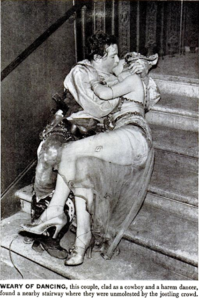
The New Year balls earned a reputation for bohemian excess, with partygoers drinking heroic quantities of alcohol and enjoying amorous adventures. At the ball to ring in 1947, Life magazine reported that “5,000 guests danced to three alternating orchestras, drank 60 cases of champagne, 30 each of whisky and gin, 10,000 bottles of beer from 22 bars and ate 1,500 chickens. At midnight the chimes of Big Ben were broadcast and a barrage of balloons cascaded from the roof… One float on which two nude women smiled and bowed was wrecked by the surging crowd. The girls escaped. Before police could restore order the other floats were demolished.” Life published a candid photograph of a couple in a passionate though uncomfortable embrace on a flight of stairs (pictured right), the man in a cowboy costume and the woman dressed as a “harem dancer”.
At the ball to usher in 1958, a powerful smoke bomb exploded on the dance floor, and crowds of choking and spluttering guests groped for the exits. That was the last straw for the Hall’s trustees, who forbade the Chelsea Arts Club from returning – though the balls were briefly revived here in the 1980s.
Almost as infamous as the Chelsea bashes were the Servants’ Balls, hosted by the socialite Lady Jeanne Malcolm from 1930 to bring some fun to the lower classes. These budget-priced fancy-dress shindigs became magnets for the LGBT+ community (in modern parlance), with so many men in drag attending that from 1935 the tickets came with a stern warning: “No Man Impersonating A Woman and No Person Unsuitably Attired Will Be Admitted”. In practice, the organisers were largely ineffective in excluding the demi-monde of the day, and Lady Malcolm complained in The Times that the events increasingly attracted “people, to be frank, who are not of the class for whom the ball is designed”.
By the 1930s the Albert Hall also seemed to be attracting ghosts. Many spiritualist meetings took place here, with sombre séances held to contact people who had passed “beyond the veil”. As the Hall’s organ provided a reverential but spooky soundtrack, clairvoyants claimed to channel spirits from the stage, and audiences belted out Christian hymns or spiritualist songs such as ‘There Is No Death’.
An empty chair had been left next to that of Conan Doyle’s widow, in the hope that the ghost of the author would join them
The most famous séance was held here on July 13, 1930, just six days after the death of the author and spiritualist Sir Arthur Conan Doyle. Thousands of believers attended the Hall that evening, where they heard the medium Estelle Roberts converse with spirits on stage. An empty chair had been left on the platform next to that of Conan Doyle’s widow, Jean, in the hope that the ghost of the author would join them. Suddenly, Roberts looked at the supposedly vacant chair and pronounced: “He is here.” Her eyes moved as if she were seeing an invisible form approaching her, and she remarked: “He is wearing evening clothes.”
The medium appeared to receive a message from the phantom author, which she passed on to Lady Doyle, who later said she believed that it was truly from her husband. The couple’s son Adrian told Time magazine that “The spirit message answers all the tests which my father and mother had agreed upon before his passing,” but added that it was “of so intimate a character it cannot be made public even to our closest friends”.
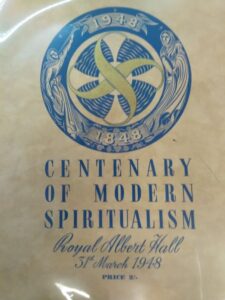
Spiritualism is just one of the controversial subcultures that the Hall has catered to over the years. Political extremists, religious evangelists, psychic healers, temperance campaigners, avant-garde musicians, ufologists and astrobiologists have all appeared here. Right in the middle of the 1960s – on June 11, 1965 – one of the most legendary countercultural events happened at the Hall: the International Poetry Incarnation, which featured the American Beat poets Allen Ginsberg, Gregory Corso and Lawrence Ferlinghetti, together with other hip versifiers from Britain, Holland, Cuba, New Zealand, Austria and Finland. Several thousand people attended, many bringing alcohol and marijuana, to hear the performers read some of the latest experimental, anti-war and drug-influenced poetry. Flowers were distributed and people painted their faces and bodies. Corso read a poem about LSD, and the Anglo-American Harry Fainlight announced that his work ‘The Spider’ had been written under the influence of the same psychedelic drug – though he was said to be high on amphetamines while reading it. As for Ginsberg, he was clearly drunk.
Although the poetry event is now remembered as a landmark moment for the hippie movement and underground culture in Britain, the Hall’s manager, Christopher Hopper, was unimpressed at the time, complaining: “I don’t want that sort of filth here. Would you send your teenage daughter to hear that sort of thing?”
During a spot of sexist banter from the 67-year-old guest star Bob Hope, the stage was flour-bombed
When the beauty contest Miss World came to the Hall for the first time in November 1969, a crowd of feminists protested outside the building. But it was the following year’s contest that really made the headlines. Dozens of women from the Women’s Liberation Movement had bought tickets, and they came armed with smoke bombs, flour bombs and rotten vegetables. During a spot of sexist banter from the 67-year-old guest star Bob Hope, the stage was flour-bombed, and the American comedian improvised a rambling response: “Anybody that would try to break up an affair as wonderful as this… with these… wonderful girls from the entire world, [has] got to be on some kind of dope, ladies and gentlemen.” The feminists’ actions were later the inspiration for the 2020 British comedy-drama film Misbehaviour.
Feminists weren’t the only people targeting the show that night. South Africa were fielding two contestants – one white, Miss South Africa, and one black, Miss Africa South – enraging an anti-apartheid group called the Angry Brigade, which exploded a bomb under a BBC van parked outside in a fruitless attempt to stop the broadcast. Fortunately, nobody was hurt in the attack.
The Hall has hosted so many successful rock concerts that it’s hard to imagine that it once had a difficult relationship with rock bands, and even banned some of them from playing here. The Nice – the trio featuring the flamboyant keyboard virtuoso Keith Emerson – performed here on June 26, 1968, and burned an American flag on stage, according to rock legend, though that isn’t strictly true. The band had just recorded a supercharged version of Leonard Bernstein’s ‘America’ (from West Side Story) as a kind of “protest instrumental” after hearing the news of Senator Robert Kennedy’s assassination, and they decided to end their Albert Hall concert with the tune. During their rendition, Emerson created a crude “action painting” of the American flag using a white canvas and cans of red and blue spray paint, and then set fire to it. The audience were audibly outraged by the stunt (they are said to have included American generals and diplomats) and the band made a hasty exit. The Hall’s general manager, Frank Mundy, announced that The Nice would never be allowed to appear at the venue again.
Missiles were thrown at The Who, including beer cans and sharpened pennies
On the evening of July 5, 1969, the rock-and-roll legend Chuck Berry shared the bill here with The Who, and the audience included a large contingent of leather-clad rockers and revivalist teddy boys, many of whom had enjoyed the Rolling Stones’ free concert in Hyde Park that day and were well refreshed. The rockers and teds enjoyed Berry’s set but were unhappy with The Who, given their mod origins. There were calls for “Chuck” to return, and missiles were thrown at the band, including beer cans and sharpened pennies. One coin struck lead singer Roger Daltrey in the face, cutting his eyelid, and he swung his microphone out into the crowd. As the journalist Keith Altham recalled, the microphone “caught this huge ted in the forehead, and he was carried out unconscious”.
Frank Mundy responded by announcing that certain acts were now prohibited from playing at the Hall. He told the music paper Melody Maker: “I wouldn’t wish to have Chuck Berry or other rock-and-roll artists here again. It’s not the artists we object to but the hoodlums they attract.”
When the US rock band Creedence Clearwater Revival played two nights here in April 1970, extra security was laid on. This was reportedly prompted by the word Revival in the band’s name, leading the management to suspect that they were rock-and-roll revivalists and could draw crowds of belligerent rockers. In the end, the gigs were very successful, with fans dancing peaceably in the aisles to the group’s straightforward American rock. Creedence were welcomed back for two more dates the following year.
Frank Zappa and his band stood outside the Hall to give apologies and refunds to ticket-holders arriving for the cancelled show
Frank Zappa and the Mothers of Invention were due to present live extracts from their 200 Motels film here in February 1971, together with the Royal Philharmonic Orchestra, until the Hall’s lettings manager, Marion Herrod, asked to see the lyrics of the songs in advance. The work, which described the debauched lives of rock stars on tour and used explicit language in places, troubled both Herrod and Frank Mundy, and the show was cancelled, although thousands of tickets had already been sold. Zappa and his band stood outside the Hall to give apologies and refunds to ticket-holders arriving for the show. His manager sued the Hall for breach of contract, but lost the case.
In April 1972, Mundy complained that the past year had seen unacceptable levels of damage to the Hall, and announced that rock and pop bands would now be banned. “We have been presenting pop concerts at the Albert Hall for the past six or seven years, and the behaviour of some audiences is getting worse,” he told the press. “There’s been a complete lack of respect for property. Chairs have been repeatedly broken, curtains torn down, the balcony rails torn out. Some staff have been threatened by youngsters who do not have tickets. There are some unthinking artists who encourage this kind of behaviour, and we’ve had enough of it.”
According to Mundy, the majority of the pop and rock concerts in 1971 – the Hall’s centenary year – had seen trouble of some kind. One was a gig by Mott the Hoople at which fans caused £1,400 worth of damage when they jumped up and down and stamped their feet in second-tier boxes, wrecking the ceilings of the boxes below. Melody Maker was unconvinced by the stated reasons for the ban, suggesting it was part of “a Right Wing plot”: pop music was symbolic of the freedom attained by young people in the 1960s, and “Banning it must afford a certain satisfaction to the forces of reaction.”
In practice, this wasn’t a blanket ban, and artists deemed to have well-behaved fans were allowed to perform here soon afterwards – including Roy Orbison, Neil Diamond, Cat Stevens and Cliff Richard. Over the next few years, folk music and progressive rock were favoured, with Fairport Convention, Steeleye Span, The Chieftains, Supertramp, and Camel (with the London Symphony Orchestra) all playing to attentive audiences. By the late 1970s, Mundy’s ban seemed to be forgotten altogether; rock audiences generally cleaned up their act, and the venue developed the more positive relationship with modern musicians that prevails today.
The Albert Hall’s history of controversial moments may be the price it has had to pay for a century-and-a-half of popularity and success. Yoko Ono once said that “Controversy is part of the nature of art and creativity.” The famous conceptual artist was well qualified to make such a statement. She and her husband John Lennon performed together only once at the Hall, in December 1968, when they spent more than half an hour sitting invisibly in a big white bag on the main stage. ♦
© 2022 Tony Barrell
This article was commissioned by Craig Hassall, the CEO of the Royal Albert Hall between 2017 and 2022. I’m grateful to Liz Harper, Archivist at the Hall, for her assistance with the research.
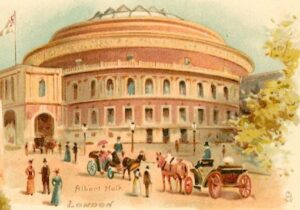
Tony Barrell is the author of many newspaper articles and several books, including The Beatles on the Roof and Rock’n’Roll London.
.
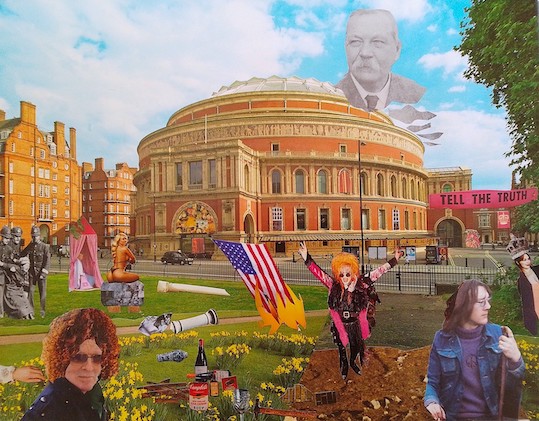
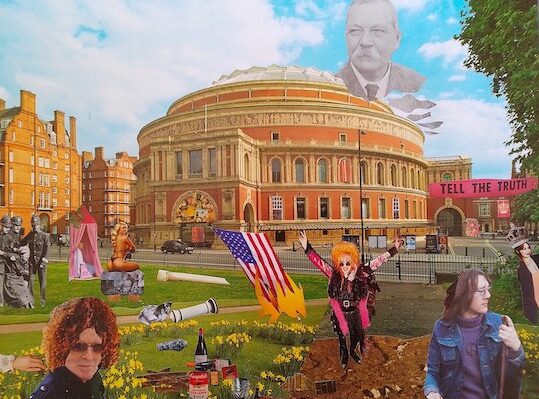
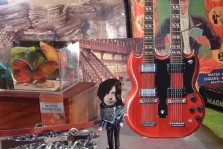
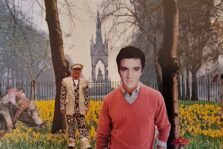
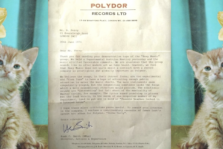
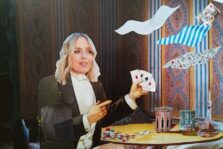
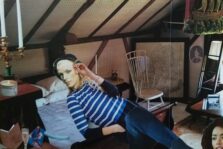

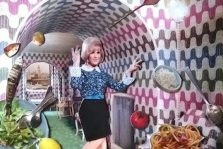
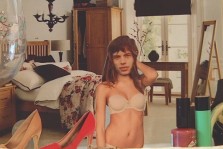
0 comments found
Comments for: ROYAL ALBERT SQUALLS